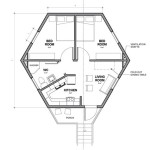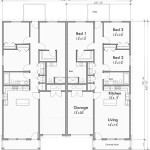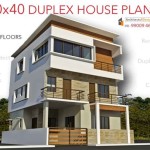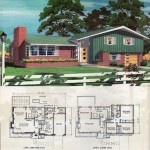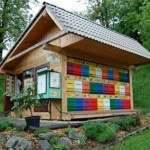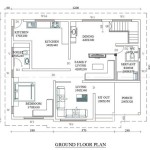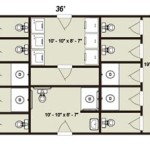Country Cabin House Plans: Designing Your Rustic Retreat
Country cabin house plans represent a compelling blend of rustic charm, functionality, and connection with nature. These plans cater to individuals seeking a simpler lifestyle, a weekend getaway, or a permanent residence that evokes feelings of warmth and tranquility. The appeal lies in their ability to create a comfortable and aesthetically pleasing space, often incorporating natural materials and designs that complement the surrounding environment. Understanding the key aspects of these plans is crucial for a successful building project, ensuring the final result aligns with specific needs and preferences.
The essence of country cabin design lies in its emphasis on practicality. These homes are often smaller and simpler than traditional houses, prioritizing efficiency in layout and resource use. The focus is on creating a comfortable and functional living space without unnecessary extravagance. This simplicity translates to lower construction costs, reduced maintenance, and a more sustainable lifestyle. The aesthetic is deliberately unpretentious, drawing inspiration from rural traditions and the natural world.
Key Point 1: Understanding Different Cabin Styles
The term "country cabin" encompasses a broad range of styles, each with its own unique characteristics. Distinguishing between these styles is an important first step in selecting or developing appropriate house plans. Several popular styles should be considered when embarking on this type of project.
Log Cabins:
Perhaps the most iconic type, log cabins are characterized by their use of exposed logs for the exterior walls. These logs can be hand-hewn or milled, depending on the desired aesthetic and budget. Log cabins offer excellent insulation and a strong connection to nature. Plans for log cabins must account for the unique structural requirements of log construction, including proper settling and sealing techniques. Different log styles, such as dovetail, chinked, and Swedish cope, will also influence the final design and construction methods.Timber Frame Cabins:
Similar to log cabins, timber frame cabins utilize a framework of heavy timbers to support the structure. However, rather than forming the exterior walls themselves, the timber frame supports infill panels of various materials, such as wood siding, stone, or even glass. This allows for greater design flexibility and the incorporation of modern building techniques. Timber frame construction requires specialized skills and knowledge, but the resulting structure is exceptionally strong and durable.Board and Batten Cabins:
This style features vertical boards with narrow strips of wood (battens) covering the seams. Board and batten siding is a relatively inexpensive and easy-to-install option that provides a rustic and charming appearance. These cabins are often smaller and simpler in design, making them ideal for weekend retreats or hunting lodges. Plans for board and batten cabins should consider proper waterproofing and ventilation to prevent moisture damage.Modern Rustic Cabins:
Blending traditional cabin elements with contemporary design principles, modern rustic cabins offer a sophisticated and comfortable living space. These cabins often feature clean lines, large windows, and open floor plans. Natural materials, such as wood and stone, are still prominent, but they are often combined with modern finishes and appliances. Plans for modern rustic cabins require careful attention to detail and a balance between rustic appeal and contemporary functionality. Sustainability is often a key consideration, with the incorporation of energy-efficient features and materials.When selecting a cabin style, it is crucial to consider the climate, terrain, and intended use of the structure. Log cabins are well-suited for colder climates, while board and batten cabins may be more appropriate for milder regions. The availability of materials and skilled labor in the area should also be taken into account.
Key Point 2: Essential Elements of Country Cabin House Plans
Regardless of the specific style, certain elements are commonly found in country cabin house plans. These elements contribute to the overall character and functionality of the structure, enhancing its rustic appeal and connection with nature.
Open Floor Plan:
Many country cabin plans feature an open floor plan, combining the living room, dining area, and kitchen into a single, spacious area. This creates a sense of openness and allows for easy interaction between family members and guests. Open floor plans also maximize natural light and ventilation. The design must carefully consider traffic flow and furniture placement to ensure a comfortable and functional space.Fireplace:
A fireplace is often the focal point of a country cabin, providing warmth, ambiance, and a sense of comfort. Wood-burning fireplaces are traditional, but gas or electric fireplaces can also be used for convenience. The fireplace should be strategically located to maximize its heating efficiency and visual appeal. The hearth and chimney must be properly constructed to ensure safety and prevent fire hazards.Porch or Deck:
Outdoor living spaces are an integral part of the country cabin experience. A porch or deck provides a place to relax, entertain, and enjoy the surrounding scenery. The size and design of the porch or deck should be appropriate for the intended use and the climate. Covered porches offer protection from the elements, while open decks provide unobstructed views. The materials used for the porch or deck should be durable and weather-resistant.Natural Materials:
The use of natural materials is a defining characteristic of country cabin design. Wood, stone, and other locally sourced materials create a connection with the surrounding environment and enhance the rustic appeal of the structure. These materials can be used for the exterior siding, interior walls, flooring, and furniture. The selection of materials should consider their durability, availability, and cost. Sustainable and eco-friendly options are increasingly popular choices.Large Windows:
Large windows are essential for bringing natural light into the cabin and providing panoramic views of the surrounding landscape. Windows should be strategically placed to maximize solar gain in the winter and minimize heat gain in the summer. Energy-efficient windows are crucial for reducing energy consumption and maintaining a comfortable indoor temperature. The size and style of the windows should complement the overall design of the cabin.Loft Space:
A loft space is a common feature in smaller cabins, providing additional sleeping or storage space without increasing the footprint of the structure. Lofts can be accessed by a ladder or stairs and often feature a low ceiling. The loft space should be properly ventilated and insulated to ensure comfort. The design must consider the structural requirements of the loft and ensure it meets all relevant building codes.Key Point 3: Considerations for Selecting and Modifying Plans
When selecting or modifying country cabin house plans, several factors should be considered to ensure a successful project. These considerations range from site preparation and building codes to budget constraints and personal preferences.
Site Preparation:
The location of the cabin will significantly impact the design and construction process. The site should be carefully assessed for its topography, soil conditions, and access to utilities. Proper site preparation is essential for ensuring the stability and longevity of the structure. This may involve clearing vegetation, grading the land, and installing drainage systems. The orientation of the cabin should be carefully considered to maximize solar gain and minimize exposure to harsh weather conditions.Building Codes and Permits:
All construction projects must comply with local building codes and regulations. These codes are designed to ensure the safety and structural integrity of the building. Before beginning construction, it is essential to obtain all necessary permits from the local authorities. Failure to comply with building codes can result in fines, delays, and even demolition of the structure. The specific building codes will vary depending on the location and the type of construction.Budget Considerations:
The cost of building a country cabin can vary widely depending on the size, style, and materials used. It is essential to develop a realistic budget that accounts for all expenses, including materials, labor, permits, and site preparation. It is also wise to include a contingency fund to cover unexpected costs. Prioritizing essential features and making cost-effective material choices can help to keep the project within budget. Obtaining multiple bids from contractors and suppliers can also help to ensure competitive pricing.Customization and Modifications:
While pre-designed cabin plans can be a convenient and cost-effective option, many individuals prefer to customize or modify them to suit their specific needs and preferences. This may involve changing the floor plan, adding or removing features, or altering the exterior design. When modifying plans, it is important to consult with a qualified architect or engineer to ensure that the changes do not compromise the structural integrity of the building. It is also important to consider the impact of the modifications on the overall cost and timeline of the project.Sustainability and Energy Efficiency:
Incorporating sustainable and energy-efficient features into the cabin design can reduce its environmental impact and lower operating costs. This may involve using recycled or renewable materials, installing energy-efficient windows and appliances, and incorporating passive solar design principles. Solar panels, rainwater harvesting systems, and composting toilets are other options that can further enhance the sustainability of the cabin. These features not only benefit the environment but can also increase the value and appeal of the property.Interior Design:
The interior design of a country cabin should complement its rustic aesthetic and create a comfortable and inviting atmosphere. Natural materials, warm colors, and comfortable furniture are all essential elements. The use of reclaimed wood, antique fixtures, and handcrafted details can add character and charm to the space. The layout and furniture placement should be carefully considered to maximize functionality and create a sense of spaciousness. Personal touches and decorative accents can further enhance the personality and appeal of the cabin.Careful planning and attention to detail are essential for creating a country cabin that meets specific needs and embodies the desired rustic aesthetic. By understanding the different styles, essential elements, and key considerations, individuals can embark on this rewarding project with confidence and create a comfortable and charming retreat that will be enjoyed for years to come.

Rustic Vacation Homes Simple Small Cabin Plans Houseplans Blog Com

Rustic Vacation Homes Simple Small Cabin Plans Houseplans Blog Com

Rustic Cottage House Plans By Max Fulbright Designs

10 Impressively Unique Cabin Floor Plans Adorable Living Spaces Rustic Small House

Rustic Vacation Homes Simple Small Cabin Plans Houseplans Blog Com

11 Amazing Rustic Farmhouse Plans For Tight Budget Craft Mart

Cabin House Plans Home Floor Designs

Rustic Cottage House Plans By Max Fulbright Designs
:max_bytes(150000):strip_icc()/SL-988_FCR-0a1aa759de95445a96be45a8aefc2749.jpg?strip=all)
Cabins And Cottages Under 1 000 Square Feet

Country House Plan 192 1048 2 Bedrm 1898 Sq Ft Home Theplancollection

